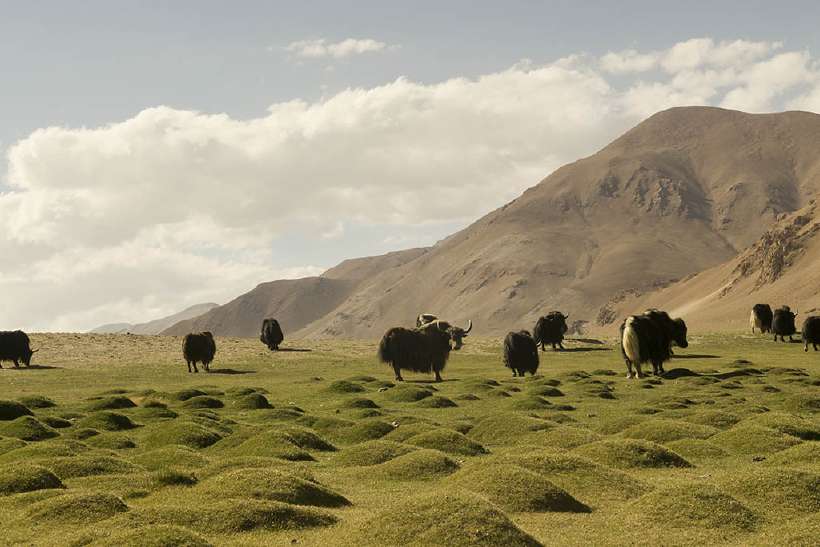Himalayas Have a Deep Impact on the Climate of the World
Home / Science for Kids / Planet Earth for Kids / Himalayas Have a Deep Impact on the Climate of the World
Tibet is known as the roof of the world. That is because it is on a region which has the highest altitude in the world. The Himalayan mountain range merges into the Tibetan plateau to form this region known as the Himalaya-Tibetan Plateau.
Besides being the roof of the world, this plateau also has a deep impact on the climate of the world, says a report published in the May, 2001, edition of Nature, a science and environment journal. How the scientists made this connection is a very exciting story.
Winds and storms carry huge amounts of sand and dust from one region of the earth to another. Over millions of years, layers of such deposits gather on the earth’s surface, each distinguishable from the other.

Since the dust and sand carry the unique properties of the region it is carried away from, it can be studied to find out more about the region, such as its climatic conditions.
These deposits provide a record of climate that can be read like the pages of a book. “You can dig down into these deposits and read the story of past climate,” says John E. Kutzbach, a climatologist at the University of Wisconsin-Madison’s Center for Climatic Research and a co-author of the paper published in Nature.
By studying ancient dust deposits in China, the North Pacific and Indian Ocean, scientists from China and the United States have constructed a detailed portrait of the effects that Himalayan mountains and the great Tibetan Plateau have on the climate of Asia.
They have established that the rise of the towering Himalayas and the adjacent Tibetan Plateau, were the primary driving force behind the Asian monsoons, which originated about 8 million years ago.
They also suggest that this high altitude region may also have helped set the stage for the Ice Ages that began about 2.5 million years ago.
Using a computer model, the scientists showed how the formation of the mountain and the plateau enhanced both the winter and summer Asian monsoons and gave rise to a drying trend in central Asia.
The mammoth mountain chain has created a wall that has blocked rain from the central Asian plains of Mongolia for the past 8 million years. This has helped create the Gobi and Mongolian deserts. This drying up allowed loose and fine dust to be carried on prevailing winds from the deserts east to China and beyond where it left a record in both land and ocean sediments. These are the sediments that the scientists have used to piece together the sequnce of events during this period of Earth’s geological history.
454 words |
4 minutes
Readability:
Grade 9 (14-15 year old children)
Based on Flesch–Kincaid readability scores
Filed under: planet earth
Tags: #oceans, #scientists, #monsoons, #climate, #tibetan, #mountains, #asian, #deserts
You may also be interested in these:
A New Camel Specie Discovered
My Dream (A Vision Of Peace)
Tree Rings tell many Tales
The Cool and Cunning Lark
Road of Jute